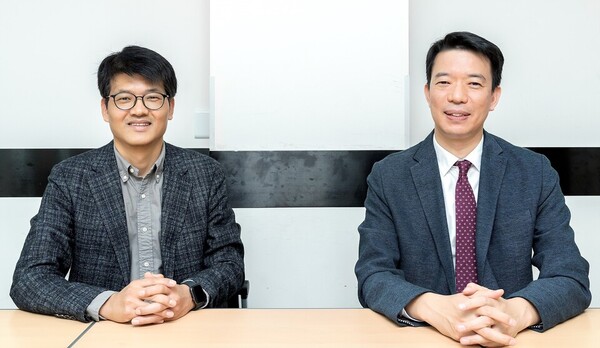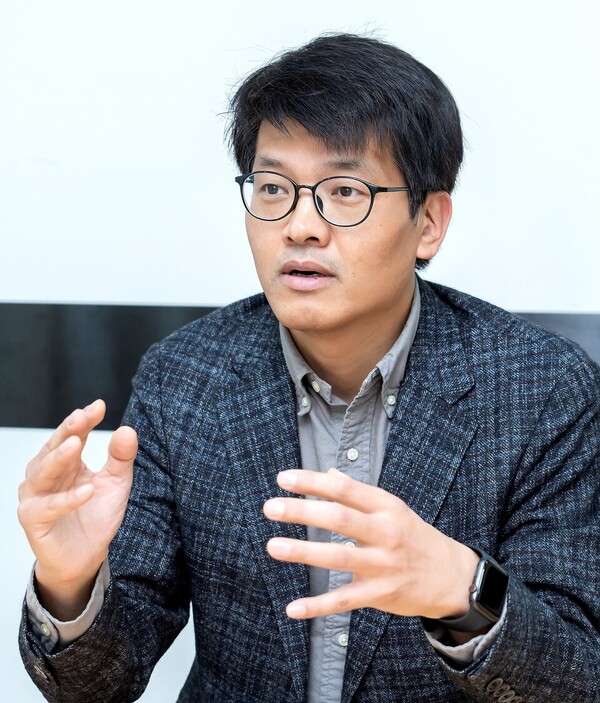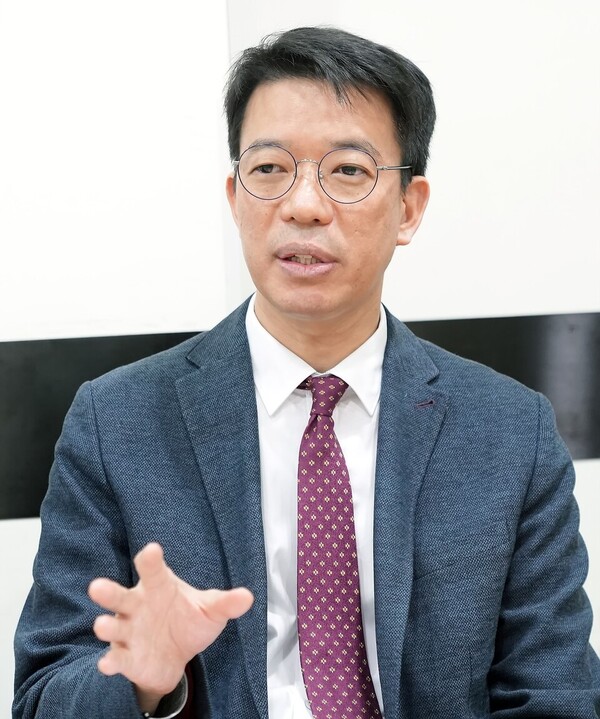Chronic kidney disease refers to the persistent passage of protein in the urine (proteinuria) or impaired kidney function. Patients with chronic kidney disease are 7.2 times more likely to die than those without it. It is also the disease with the highest medical expenses per patient.
According to the Korea Disease Control and Prevention Agency (KDCA), the prevalence rate of chronic kidney disease in Korea was 8 percent in 2020, more than double the 3.4 percent in 2015, and its severity has become increasingly prominent.
However, the awareness and diagnosis rate of chronic kidney disease in Korea is very low. The Korean Society of Nephrology (KSN) reported that only 203,978, or 4.4 percent of the total estimated number of patients with chronic kidney disease, received medical treatment in 2017.
Against this backdrop, SGLT-2 (Sodium-Glucose Cotransporter 2) inhibitors, first developed as a treatment for type 2 diabetes, have recently attracted great attention as their benefits have been confirmed in chronic kidney disease, followed by cardiovascular diseases. As diabetes and hypertension are the main causes of chronic kidney disease, SGLT-2 inhibitors are emerging as important drugs for the integrated management of these diseases.
In Korea, however, there are limitations to the integrated management recommended by the guidelines due to multidisciplinary collaboration between endocrinology, cardiology, and nephrology and salary restrictions for each indication of SGLT-2 inhibitors.
Korea Biomedical Review interviewed Professor Yoo Tae-hyun of the Department of Nephrology at Severance Hospital and Professor Chung Sung-jin of the Department of Nephrology at the Catholic University of Korea Yeouido St. Mary's Hospital to learn about the current management of chronic kidney disease patients, the paradigm shift in treatment brought about by SGLT-2 inhibitors, and the importance of multidisciplinary treatment for chronic kidney disease and directions for improvement.

KBR: What is the status of typical chronic kidney disease patients in Korea who visit nephrology clinics?
Yoo: Korea has a good screening system, including urine and kidney function tests. So, it should be easy for patients to recognize kidney disease, but the number of officially diagnosed patients is low. This is because chronic kidney disease is one of the major complications of diabetes and hypertension, and most people tend to focus on managing the disease when it is first diagnosed. This is not a unique problem in Korea. This was the case until the advent of SGLT-2 inhibitors, which can be used for both diabetes and chronic kidney disease (CKD).
Chung: Most patients come to us via endocrinology or cardiology departments, routinely checking albuminuria and eGFR (estimated Glomerular Filtration Rate). If physicians find any abnormalities, they refer the patients directly to nephrology. According to the KSA guidelines, it is recommended to consult with nephrology if the eGFR is less than 60 ml/min/1.73㎡ or albuminuria based on diabetes. Regarding multidisciplinary care, the approach should be to control diabetes in endocrinology and kidneys in nephrology.
KBR: Diabetes is known to be a major risk factor for CKD. We are curious to what extent the risk of CKD increases in patients with diabetes.
Chung: Patients with diabetes mellitus account for about 30 percent of all patients with CKD. Diabetes is the leading cause of CKD. In the United States, about 25 percent of diabetic patients and 14 percent of pre-diabetic patients are already in stage 3 or 4 of CKD. In Korea, 8.6 percent of diabetic patients have an eGFR of less than 60 ml/min/1.73㎡, and 26.7 percent have albuminuria. Although the data may not be accurate because it is based on patients who were tested, not all people with diabetes, it is estimated that the number of patients with chronic kidney disease is higher considering that there are more than 6 million adult diabetics over the age of 30 in Korea.
KBR: We understand that the government has included eGFR and albuminuria testing in the diabetes appropriateness assessment for primary care providers.

Yoo: Right. In March, screening for diabetic nephropathy was moved from a monitoring indicator to an “evaluation indicator” in the diabetes appropriateness assessment. Since we just started this year, the exact results are not yet available. Still, it is important to note that the government is emphasizing the importance of kidney screening in people with diabetes.
However, there may be some resistance from patients to the idea of too frequent screening at primary care centers. However, the clinics are doing a good job of encouraging patients to get tested. If such a system is established, it is expected that kidney disease can be managed more and more efficiently.
Chung: I know that the Health Insurance Assessment and Review Service (HIRA) is gradually establishing a system for the efficient management of chronic kidney disease, and it is constantly updating the necessary test indicators.
KBR: You said that 8.6 percent of diabetic patients in Korea have an eGFR of 60 ml/min/1.73 m2 or less, and 26.7 percent have albuminuria. According to the guidelines, these patients need to collaborate with nephrology. What is the actual status of collaboration?
Yoo: In reality, it is not satisfactory. Patients are most often referred when they have 30-40 percent kidney function left.
Chung: The guidelines of the Korean Diabetes Association (KDA) state that the referral point is when the eGFR is less than 30ml/min/1.73㎡. The timing of the nephrology referral recommended by KDA is too late. Conversely, the timing recommended by the KSN is too early from the viewpoint of KDA. I think the challenge is to resolve this gap.
KBR: That means patients visit the nephrology department when their kidney function is already declining. Can they recover with treatment?
Yoo: If the eGFR drops to 30 ml/min/1.73 m2, it isn't easy to recover, even with medication. Therefore, with the advent of SGLT-2 inhibitors, global guidelines emphasize the importance of a multidisciplinary approach from the beginning to manage cardiovascular and renal complications of diabetes.
Chung: Multidisciplinary care is the latest buzzword. With a multidisciplinary approach, nephrology can review whether the ARB/ACEi has been used at the maximum dose the patient can tolerate according to the guidelines. It is possible to achieve and maintain a target blood pressure of 120. They can also coordinate diet, which can be contradictory in diabetes and kidney disease. I think it would be very helpful for patients to have nephrologists, endocrinologists, and cardiologists working together to achieve the best possible outcome.
KBR: Recently, the KSN published guidelines for diabetic kidney disease, and we understand that SGLT-2 inhibitors are included in therapeutic drugs.
Yoo: SGLT-2 inhibitors are currently recommended as Class 1A in Korean guidelines for patients with chronic kidney disease with diabetes. Since the dapagliflozin (Forxiga) and empagliflozin (Jardiance) studies showed almost the same effect, all domestic and international guidelines now recommend SGLT-2 inhibitors as first-line treatment for patients with chronic kidney disease with diabetes.
Chung: Besides domestic guidelines, a draft KDIGO guideline was recently presented at the 2023 European Society of Nephrology Annual Congress (ERA 2023). It is presumed that SGLT-2 inhibitors will be recommended as 1A for all chronic kidney disease patients with albuminuria >200 mg/g and eGFR >20 ml/min/1.73 m2, regardless of the presence or absence of diabetes. In addition, if albuminuria is less than or equal to 200 mg/g, SGLT-2 inhibitors will be recommended as 2B in all patients with CKD with an eGFR of 20 to 40 ml/min/1.73 m2. While this is still in draft form, and we will not know for sure until the full version is released, the level of recommendation for SGLT-2 inhibitors is quite high, given that ARBs and ACEi drugs, commonly used in CKD, are recommended as 1B.
KBR: Does this mean SGLT-2 inhibitors will be the first-line agents in chronic kidney disease, regardless of diabetes status?
Chung: Based on the results of SGLT-2 inhibitor studies in chronic kidney disease, such as DAPA-CKD, early use of SGLT-2 inhibitors is necessary for patients with chronic kidney disease. However, let's look at the prescribing patterns in Korea and abroad. Prescription changes in clinical practice are not as fast as guidelines and research results, which must be emphasized.
KBR: Health insurance does not cover SGLT-2 inhibitors for patients with chronic kidney disease in Korea. Is this a limiting factor?
Yoo: Patients who go to nephrology clinics know that proteinuria is important, and the main purpose is to protect kidney function, so if we explain it enough, they tend to use SGLT-2 inhibitors even if they are not covered. However, it may be limited for the physicians who prescribe them because of the extra step of explaining these things.

Chung: As you said, if it's covered, there's no need for additional explanation, but if it's not covered, it can be a hassle because you have to explain that you have to pay out of pocket once more. However, in the case of Forxiga, the drug's price is about 20,000 won ($15) per month, so it may not be too burdensome. In addition, the drug's price is expected to be reduced by April next year, and it will be available in the 10,000 won range. I don't think it matters whether it's covered or not. It's just that we have to explain it to patients one more time.
Yoo: No matter how cheap it is, patients may have different opinions, so the fact that it is non-reimbursable may be a limitation. I think it's essential to make it reimbursable.
KBR: What is your assessment of the changes that SGLT-2 inhibitors have brought to treat chronic kidney disease?
Yoo: I recently attended the American Society of Nephrology 2023 Annual Scientific Meeting (ASN 2023) and was impressed. To summarize, SGLT-2 inhibitors are no longer an "option" but a "necessity" in treating chronic kidney disease. In the past, many studies were based on RAAS inhibitors and combined with other therapies, hoping to achieve additive effects. The studies presented at ASN 2023 focused on SGLT-2 inhibitors as a base and evaluated the additive effects of other therapies. It was clear to me that, internationally, SGLT-2 inhibitors are already recognized as an essential class of drugs that should be used in patients with chronic kidney disease, and I felt that there was no way to avoid this trend.
For example, some agents, such as endothelin receptor blockers, have been difficult to use due to certain side effects. The combination of SGLT-2 inhibitors and endothelin receptor antagonists is now being studied, as the diuretic effect of SGLT-2 inhibitors may offset the edema of traditional endothelin receptor antagonists, providing a synergistic renal benefit. There are also studies of SGLT-2 inhibitors in combination with pinirenone. Although pinerenone is associated with a lower risk of hyperkalemia compared to classical MRA, it does have the side effect of elevated potassium levels, which SGLT-2 inhibitors can reduce, so there are studies combining the two agents.
Taken together, there is a lot of work being done on taking SGLT-2 inhibitors as a base and adding on other agents to offset the symptoms of fluid retention, hyperkalemia, and electrolyte imbalance that are typical of patients with poor renal function, with the idea that there may be an added benefit to the patient.
Chung: We used to use the phrase “first-line” often, but nowadays, SGLT-2 inhibitors are often referred to as “foundational treatment” in research papers. I thought about why this was the case and took it to mean that we should use it unconditionally without thinking about anything else. In the future, we will have to think about which agents to add on while using SGLT-2 inhibitors as a base.
For instance, a recent pooled analysis of the DAPA-CKD and CREDENCE studies showed that as CKD progresses, patients are more likely to develop hyperkalemia and acute kidney injury, leading to discontinuation of RAS inhibitors. However, when SGTL-2 inhibitors are added to RAS inhibitors, hyperkalemia is alleviated, and the risk of acute kidney injury is reduced, increasing the likelihood of staying on RAS inhibitors. In other words, SGTL-2 inhibitors provide an opportunity to stay on RAS inhibitors, and I believe the roles are reversed.

